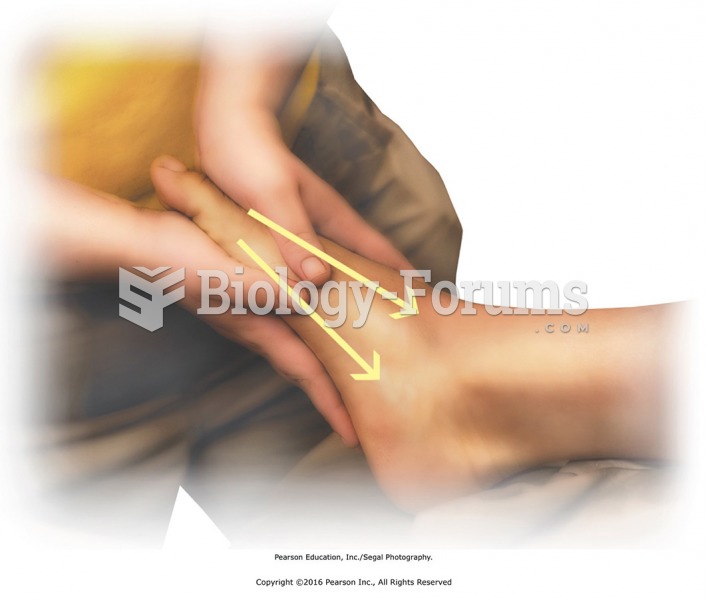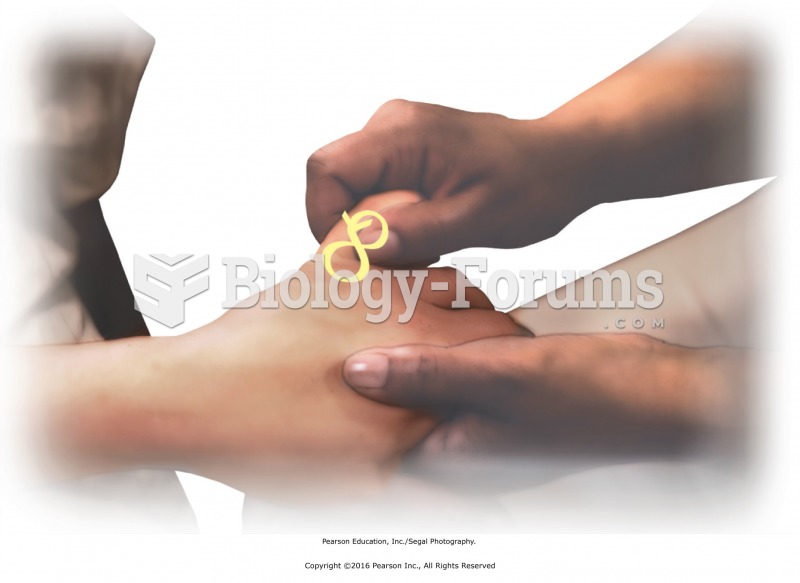|
|
|
The calories found in one piece of cherry cheesecake could light a 60-watt light bulb for 1.5 hours.
Your skin wrinkles if you stay in the bathtub a long time because the outermost layer of skin (which consists of dead keratin) swells when it absorbs water. It is tightly attached to the skin below it, so it compensates for the increased area by wrinkling. This happens to the hands and feet because they have the thickest layer of dead keratin cells.
Pubic lice (crabs) are usually spread through sexual contact. You cannot catch them by using a public toilet.
Fewer than 10% of babies are born on their exact due dates, 50% are born within 1 week of the due date, and 90% are born within 2 weeks of the date.
About 100 new prescription or over-the-counter drugs come into the U.S. market every year.
 Apply oil or lotion with effleurage to both sides of the neck. With recipient faceup, apply oil or ...
Apply oil or lotion with effleurage to both sides of the neck. With recipient faceup, apply oil or ...
 Apply direct pressure along upper trapezius, turning the head to access the area. Use your thumb to ...
Apply direct pressure along upper trapezius, turning the head to access the area. Use your thumb to ...





